The Hu-RONKO (Ronko)
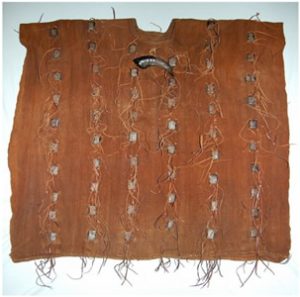
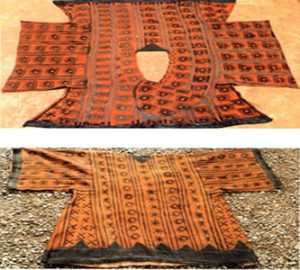
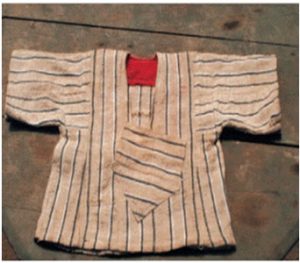
The Ronko fabric is a country cloth, woven in strips that were dyed in a reddish rusty brown local pigment mixture. Derived from the Limba word ‘Hu-Ronko’, the fabric is usually sewn into traditional garments commonly worn by the Limba, Yalunka and Koranko Warriors, Chiefs, Secret Society Personnel and in most cases Hunters and Blacksmiths for the purpose of spiritual protection.
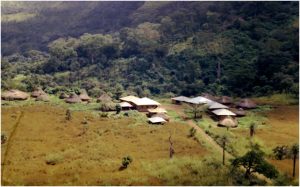
The Limbas of Sierra Leone are typically based in the Northern Province of the country. Believed to be the ‘earliest indigenous people of Sierra Leone’, they may have been living there prior to colonialism. The Limbas considered themselves to be mountain people, as they were found hiding around mountain areas especially the Wara Wara Mountains to avoid being captured during the slave trade. Historically, they had to fight off the Susu expansion, the Fullah and Madingo incursion in their territory. According to Wikipedia, Kakoya Village (commonly known as Koya Village) in Wara-Wara Bafodea Chiefdom was the spiritual home of the Limbas. All Limbas would ‘return to the mountain through the town beyond a “door” through the rock’.
Spiritualism has been at the helm of the Limba Cultural history. They have a folklore about spirits called ‘Krifi’. Though there is limited information about this, it was believed to be the spirit of protection for its people. However, it was in the 1930s that the art of cloth weaving became prevalent amongst the Limbas. There was a strong need for protection of the tribe especially as they were now being surrounded by migrants from the neighbouring Guinea. Research confirmed until 1950, most of Limba wives grew and spun cotton, and most husbands wove the thread and sew the strips of cloths into clothing.
It was during 70s that the decoration of the new native garment called ‘Ronko’, with a traditional name commonly known as ‘Hu Ronko’ began. Up until the 80s, cloth weaving was most common to Bafodeans, I can attest to that because my Stepmother used to weave country cloth in Kabala, when I used to visit them in the 80s. However, Sierra Leone Heritage Organisation in their research, have traced the Hu Ronko garment as far back as the 1890s. It was traditionally made with native-band cloth (tikan ba sokeng) in Bafodea, woven by men from locally grown cotton, generally white in color, though occasionally having a few warps of black or blue lines. Hu Ronko shirts were also made by local tailors from nonnative white cloth (tika gba kaporotui), they varied in width from about 3-4″ (7.6-10.2cm) and were woven in southern Bafodea on two loom types, and in other northern regions on a third loom form.
Subsequently, the Hu Ronko fabric attracted chiefs, secret societies, hunters, warriors and blacksmith, who started using the garment for spiritual protective powers, as they engaged in dangerous pursuits. They are still worn today by male initiates in the course of their initiation into adulthood and by Limba, and other indigenous paramount Chiefs at the culmination of their ceremonies of installation. It is strongly believed that the garment especially those made with embedded spiritual powers should never be washed. Some of them will have animal skins, bones, ivory, and protective amulets, likely to contain scripts from the Quran. The example below has a number of small leather rectangles, or amulets, sewn onto it, along with leather tassels, a piece of horn, and a coiled basketry rosette. Such shirts were worn by hunters and others engaged in dangerous pursuits – this is described as a war-shirt.
Back in the 1800s, it is believed the Hu Ronko originally from the north of Sierra Leone, was known as a ‘medicine shirt’, due to its spiritual powers. The actual ‘spiritual protective powers’ were believed to come from spiritual ceremonies performed on the local pigments used to dye and design the garments. The garments have also been associated with local militias, that fought during the Sierra Leone civil war in the 90s. It is believed with this garment on, no bullets can penetrate the bodies of the militias who wore them. In fact, it was a myth that women were forbidden from touching the traditional garment that have the actual spiritual powers, and those who did not adhere to this rule would lose their fertility and become barren. These garment with high spiritual powers would only be made available to spiritual and tribal heads, who are expected to keep the garment safe and away from being accessed by ‘ordinary’ people and must ensure the garment is returned back to the spiritual leaders after their death.
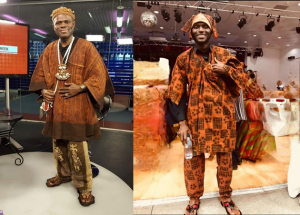
Today, you will see modern secular versions of this Limba shirt (hu-ronko) decorated with black stamped motifs, such as the ‘Fence and Rising sun’ enjoyed at a prestige beyond the villages of northern Sierra Leone in which they were originally produced. The Hu Ronko is now a garment of traditional pride and cultural display, especial for the indigenous Limbas of Sierra Leone as displayed below. Locals wear it for traditional gatherings with fashionable hats in various designs as shown in the following gallery.
The Limbas are revered in Sierra Leone for the love of their culture, and determination to preserve it. Still present is the strong display of traditional pride in the Limbas, who are known to be the most peaceful tribe in Sierra Leone.
The innate pride of the Limbas of Sierra Leone is evident in the formation of ‘Mabohanday Organisation’ in North Brunswick New Jersey (NJ) America, in 1982. The organisation has since spread across various States in America, and now has branches in The United Kingdom (UK) and The Netherlands in Europe. Today, Mabohanday is the biggest Tribal organisation amongst Sierra Leoneans and continues to spread worldwide, boasting thousands of members across America and Europe. In their various activities and events, secular versions of the Ronko has been worn and displayed proudly by members in honour of the representative prestige of the fabric and the garment as displayed below.
Given the sense of pride and fulfilment we have from wearing and displaying our Ronko garment as Limbas, it is fair to conclude that the Hu Ronko or Ronko as we now know it is here to stay, and we are determined to continue adorning this fabric at any given opportunity; and making our fashion and traditional statement of pride wherever we go.






